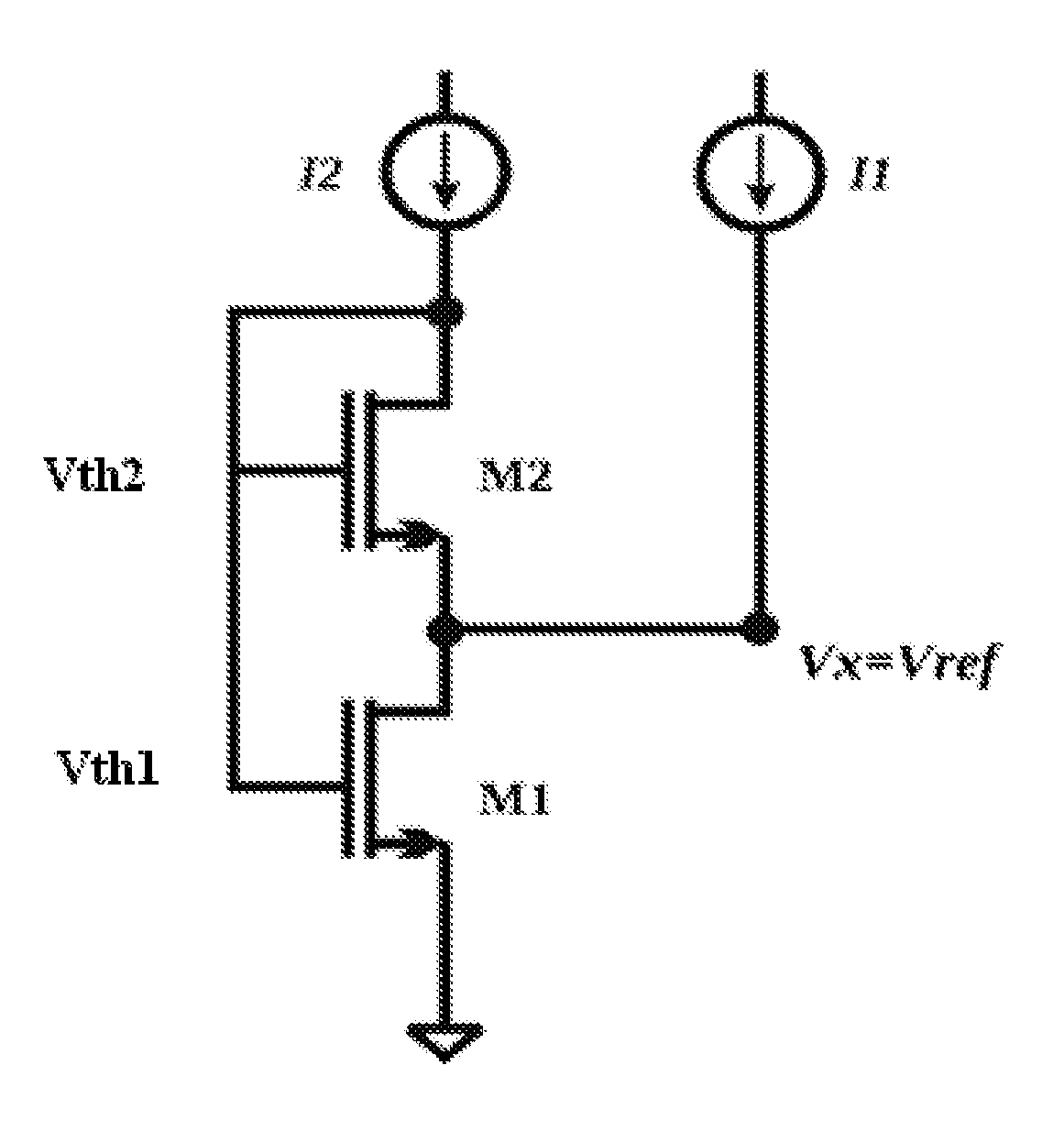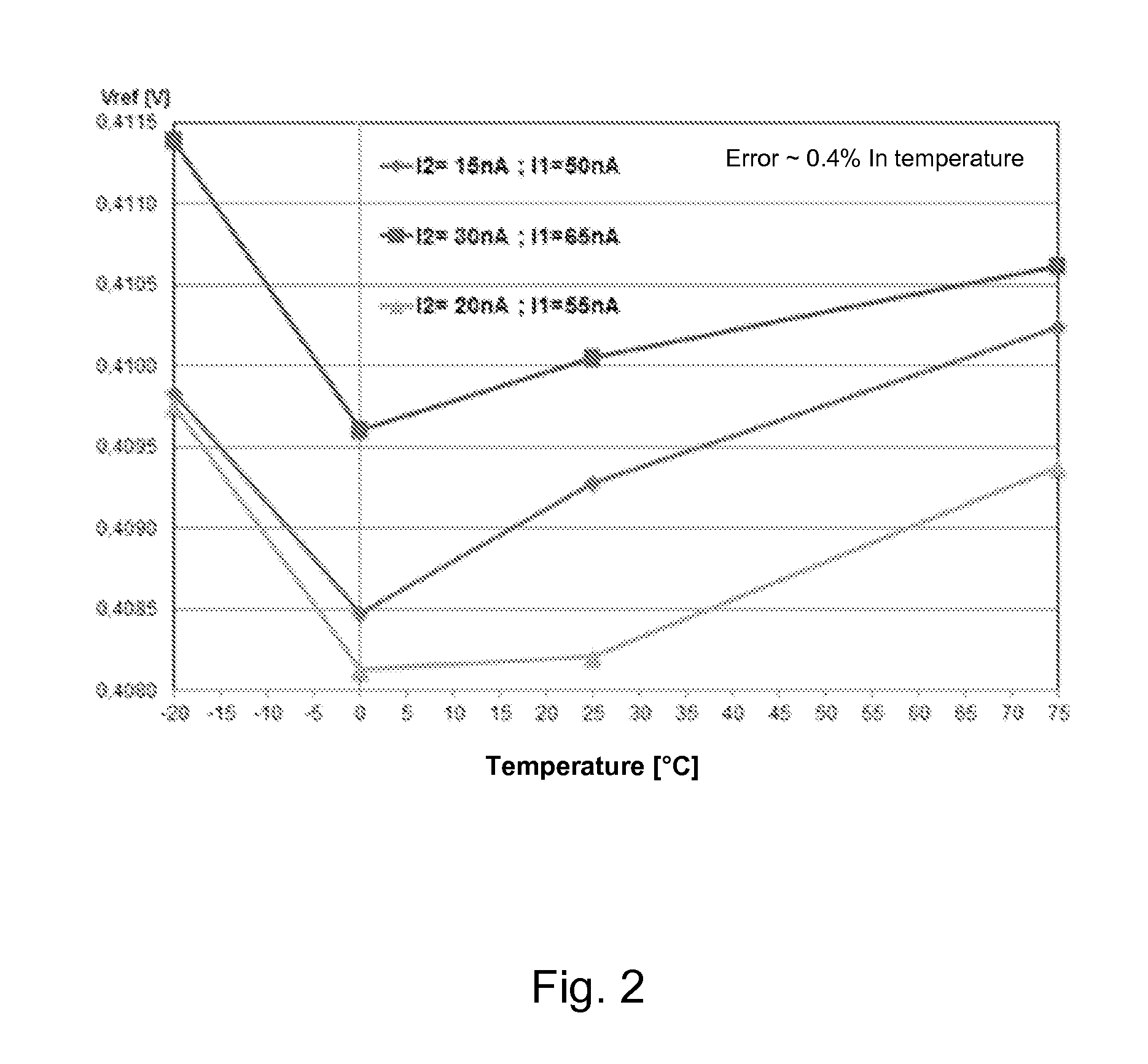Temperature-Compensated Reference Voltage System With Very Low Power Consumption Based On An SCM Structure With Transistors Of Different Threshold Voltages
a reference voltage and very low power consumption technology, applied in the field of reference voltage circuits, can solve the problems of increasing power requirements of advanced systems, increasing power requirements, and tight levels, and evidencing a greater energy consumption required for systems to operate perfectly
- Summary
- Abstract
- Description
- Claims
- Application Information
AI Technical Summary
Benefits of technology
Problems solved by technology
Method used
Image
Examples
Embodiment Construction
[0024]As can be inferred by the attached figures, the present invention consists of using a SCM (Self Cascode MOSFET) structure composed of two transistors with different threshold voltages (Vth). Furthermore, both transistors are biased with two independent current sources, I1 and I2. These bias currents are still relatively small and within the range of a few nano Amperes (nA), that results in a substantially low power consumption. As can be seen in FIG. 1, the proposed SCM structure has the M1 transistor as an NMOS transistor which has its threshold voltage (Vth1) larger than the threshold voltage of the M2 transistor (Vth2), so Vth1>Vth2. The bulk (b) terminal of both transistors is connected to the ground terminal, so the M2 transistor has a body effect (Vbs≠0).
[0025]The SCM structure basically consists of two NMOS transistors, M1 and M2, connected so that the M2 source electrode is tied to the M1 drain electrode. The M2 drain electrode is connected to the M2 and M1 gate electr...
PUM
 Login to View More
Login to View More Abstract
Description
Claims
Application Information
 Login to View More
Login to View More - R&D
- Intellectual Property
- Life Sciences
- Materials
- Tech Scout
- Unparalleled Data Quality
- Higher Quality Content
- 60% Fewer Hallucinations
Browse by: Latest US Patents, China's latest patents, Technical Efficacy Thesaurus, Application Domain, Technology Topic, Popular Technical Reports.
© 2025 PatSnap. All rights reserved.Legal|Privacy policy|Modern Slavery Act Transparency Statement|Sitemap|About US| Contact US: help@patsnap.com



